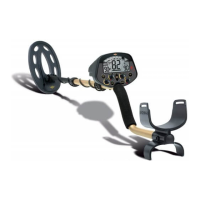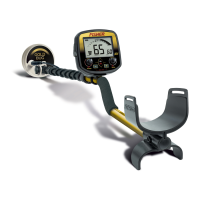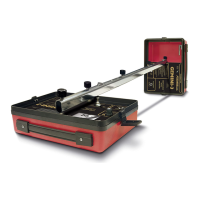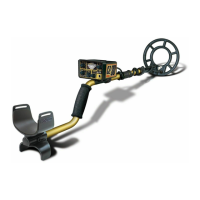DISCRIMINATION MODE (continued)
Process Number (Process #)
This menu selection offers the user a choice among several different methods of audio
discrimination to accommodate a variety of search conditions and personal preferences.
These methods differ in the way the signals are processed for analysis.
The Process Number selections are:
dE: Default Process
This is the best process to use for most conditions, and is thus the default.
JE: Jewelry Process
Detector will be more sensitive to small and low-conductivity metals like jewelry,
but will run noisier in trashy areas.
bc: Bottle Cap Mode
Response is modified so that steel bottle caps will usually produce inconsistent, or
non-repeatable, tones and broken sounds. There may be a slight reduction in the
ability to separate adjacent targets. Use this process in areas with a high
concentration of steel bottle caps. Also refer to the Capabilities & Limitations
section for sweep techniques to aid in the identification of steel bottle caps
PF: for use in plowed fields.
Some users may prefer this process for hunting is irregular ground, especially
plowed fields.
What You See vs. What You Hear
The visual target ID displayed on the LCD is based entirely on sampled processing; the
number displayed represents a snapshot of the target’s identification as the searchcoil
passes over the object. When using these different processes, or methods, the detector’s
audible response may differ from the visual. When using the different processes, there is
not a 100% correspondence between what you see and what you hear, especially on buried
targets where ground minerals influence target ID and audible response. By making the
audio and visual systems independent, the F75 allows each system to do what it does best.
The audio is optimized for quick response and target feel, whereas the visual system
provides the best numeric resolution of target ID.
